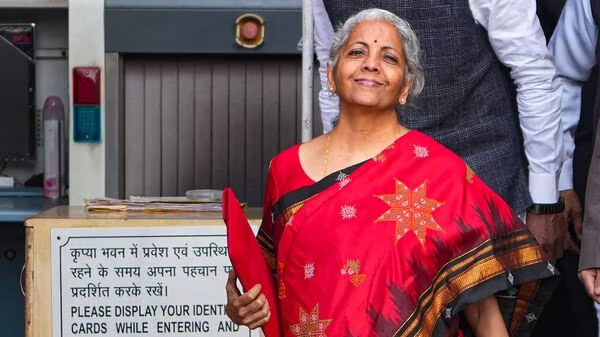India–US Trade Tensions Rise Over Steel and Auto Tariffs NMDC Limited reports a 38% drop in Q4 FY24 consolidated net profit RINL to Raise $23 Million Through Land Sales Amid Crisis

As the Indian Finance Minister, Nirmala Sitharaman, gears up to present the vote-on-account budget for FY25 on February 1, the nation stands at a critical juncture in its economic trajectory. In assessing the macroeconomic landscape, there are both positive and negative indicators that will influence the upcoming budget.
On the positive side, growth projections appear promising. The National Statistical Office's (NSO) advance estimates and the Reserve Bank of India's (RBI) forecasts suggest a robust real growth rate of 7–7.3% in FY24. This provides some flexibility for formulating budgetary estimates for revenue and expenditure. However, managing this balance becomes intricate given the looming expectations of a populist budget in an election year where increased welfare spending is anticipated.
Encouragingly, twin deficit numbers offer a degree of comfort. Goldman Sachs has revised India's current account deficit (CAD) forecast to 1.3% of GDP, a decrease from the earlier estimate of 1.9%. This revision is attributed to higher service exports and lower oil prices. Furthermore, an increase in revenue receipts is expected to help meet the budgeted fiscal deficit of 5.9% of GDP comfortably.
Conversely, recent data on industrial production growth and inflation reveal significant economic challenges. The negative growth in consumer durables, consumer non-durables and capital goods indicates a contraction in both rural and urban demand. Retail inflation, which touched a four-month high of 5.7% in December 2023, is primarily driven by a 9.5% increase in food inflation.
In light of the stark decline in industrial production, particularly in rural areas, the interim budget should prioritise demand-side interventions to revitalise the industrial sector. The budget must include measures to enhance rural incomes, focusing on generating higher non-farm income for small and marginal farmers. Urgent attention should be given to providing budgetary support to rural financial institutions, promoting financial inclusion, and providing access to credit.
To counter rising inflation, the budget needs to complement the RBI's monetary policy while addressing supply-side challenges. Allocations to essential schemes like the public distribution system (PDS), fertiliser subsidy, and PM-Kisan should be reassessed to promote initiatives enhancing long-term agricultural productivity. Implementing schemes similar to Production-Linked Incentives (PLI) in manufacturing for the agriculture sector can stabilise food prices and ensure price stability.
Fostering new growth drivers:
For sustained economic growth, the budget should allocate resources to emerging industries such as renewable energy, climate tech, fintech, electric vehicles, healthcare, insurance, biotechnology, animation, visual effects, gaming, comics (AVGC), research and development (R&D), and artificial intelligence (AI). This strategic investment aims to stimulate innovation, job creation and overall economic growth.
The budget must introduce measures to enhance credit availability and provide better access to working capital and investment funds for the micro, small, and medium enterprise (MSME) sector, which contributes significantly to India's exports. Simultaneously, increased allocations for roads, ports, and logistics are essential to complement the growth of this sector.
As India looks set to join the JPMorgan and Bloomberg emerging market indices in 2024, the Finance Minister faces the delicate task of navigating the fiscal glide path cautiously. Striking a balance between economic imperatives and political exigencies is crucial, as an overtly populist budget could undermine the government's efforts towards fiscal consolidation in the post-pandemic era.
In conclusion, the interim budget serves as a pivotal tool to steer India through economic challenges. By addressing rural distress, supporting key sectors, and maintaining fiscal discipline, the government can pave the way for sustainable growth and development.
Also Read : Modi government considers fuel price cut as Brent crude dips below $80 Revitalising Special Economic Zones (SEZs): A Path to Economic Growth